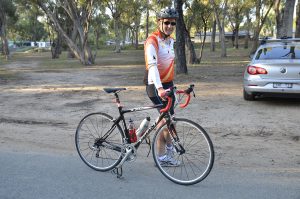What is your field of medical research?
Ovarian cancer, a disease affecting 4000 Australian women. Five-year survival rates for ovarian cancer are less than 50 per cent. I hope my work can go some way toward improving these outcomes.
My research examines the role of female reproductive hormones in ovarian granulosa cell tumours, a subtype of ovarian tumours affecting two to five per cent of patients. My work is aimed at finding new treatments to prevent the growth and spread of these tumours.
Why are you passionate about science – and women’s health?
Studying ovarian cancer not only fascinates me – it is also challenging and exciting. There can be no better motivation for me to come to work when I know our discoveries have real potential to revolutionise treatment for women.
From a scientific point of view, my work is a ‘best of both worlds’ scenario, as I get to study endocrinology in the context of cancer. Endocrinology looks at the roles of hormones in the body and disorders created by their actions. The ovary is an organ that both makes and responds to hormones.
Endocrine therapy has probably been the most important systemic therapy for hormone-dependent cancers, including breast cancer, so there is real potential to make a difference for ovarian cancer through new hormone-based therapies.
What drives and inspires you?
I am very fortunate to have been supported in my research by the Ovarian Cancer Research Foundation (OCRF). Through the foundation, I have had the immense privilege and pleasure of meeting many ovarian cancer patients, both survivors and women who sadly have lost their battle. Every woman I have met through the OCRF has shown incredible bravery and grace. These women act as great ambassadors and trailblazers for the ovarian cancer cause, and support our work to find an early detection test and better therapeutic options. They inspire me and other ovarian cancer researchers at Hudson Institute to do our very best.
Can you tell us about a project you’re working on at the moment?
Part of my research is in developing an innovative new treatment for ovarian cancer. We are examining whether a combination of drugs could be used to target two key pathways in ovarian tumour development. One of these drugs is already used in the clinic, while the other is currently in phase III clinical trials for other types of cancer, so there is great potential for their use to treat ovarian cancer patients in the clinic quickly.
What do you hope to have achieved by the time you retire?
I hope the research we do here at Hudson Institute will make a difference, and even provide a cure for some women with this disease. As with any type of medical research, there are hurdles to overcome. However, I believe we are on the right path with our current research focus. To know that we could save one woman’s life would make it all worthwhile.
When you have a couple of hours free, how do you pass the time?
There’s nothing better than jumping on a bike and exploring Victoria’s cycling routes. I can recommend ‘The 1 in 20’ plus ‘The Wall’ through the Dandenong Ranges, and the East Gippsland Rail Trail. One of the best things I’ve ever done is the 520 km Murray to Moyne Relay Ride for Research with Hudson Institute a couple of years ago. My favourite place to cycle is the Puglia Aqueduct in Cisternino, Italy – it has amazing views!
OVARIAN CANCER FACTS
- In 2017 it is estimated that 1580 new cases of ovarian cancer will be diagnosed in Australia.
- Ovarian cancer is estimated to be the eighth most commonly diagnosed cancer in females in Australia. On average, four Australian women are diagnosed with ovarian cancer every day.
- The five-year survival rate for ovarian cancer is around 45 per cent. In groups of women with high-grade tumours, the five-year survival rates can be as low as 10 per cent.
- Ovarian cancer is the sixth most common cause of cancer death in Australian women.
There is no early detection test currently available for ovarian cancer.

